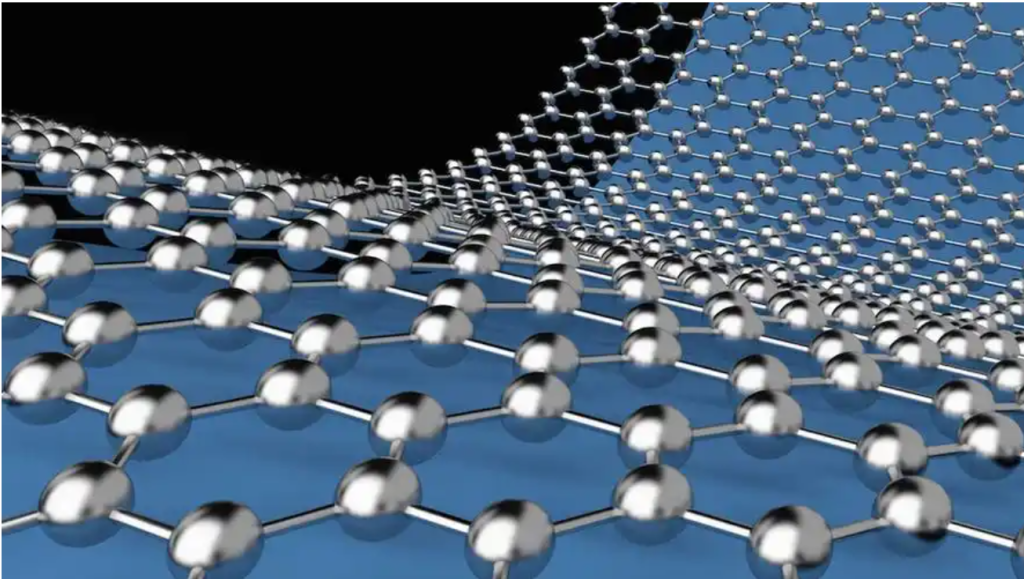Is Graphene the Future of Material Science?
Graphene, a single layer of carbon atoms arranged in a two-dimensional honeycomb lattice, has garnered attention in various industries for its exceptional properties. Its high conductivity, incredible strength, and flexibility make it an incredibly promising material. As industries explore innovative ways to leverage graphene, it’s natural to ask: Is graphene truly the future of material science?
This article will explore the key features, applications, and potential of graphene in the world of materials, examining its durability, performance, and the emerging industries that are investing in this extraordinary material.

Graphene: A Game-Changer in Material Science
What is Graphene?
Graphene is often referred to as the “wonder material” due to its remarkable properties. Composed of a single layer of carbon atoms, graphene is stronger than steel, more conductive than copper, and flexible enough to be bent without breaking. These properties make it a highly sought-after material for a variety of applications, from electronics to energy storage.
Why is Graphene So Special?
Graphene’s exceptional qualities stem from its atomic structure. Its carbon atoms are tightly bonded in a hexagonal pattern, providing high stability and conductivity. This unique arrangement allows it to conduct electricity with minimal resistance, making it an ideal candidate for applications that require high electrical efficiency, such as batteries, transistors, and flexible electronics.
Moreover, graphene’s mechanical strength is astonishing. It is about 100 times stronger than steel by weight and is incredibly lightweight, making it useful in industries where strength and weight are crucial factors, such as aerospace and automotive manufacturing.
Applications of Graphene
Graphene’s versatility means it has a wide range of potential applications. Here are a few key industries that are already exploring the use of graphene:
- Electronics:
Graphene’s ability to conduct electricity with minimal resistance makes it ideal for use in transistors, sensors, and flexible electronics. It could potentially replace silicon in many applications, leading to faster, smaller, and more efficient devices. - Energy Storage:
Graphene-based supercapacitors and batteries have the potential to revolutionize energy storage. Graphene batteries can charge faster, last longer, and store more energy compared to traditional lithium-ion batteries. This makes them highly sought after for use in electric vehicles, renewable energy systems, and consumer electronics. - Medical Applications:
Graphene’s biocompatibility makes it an ideal material for medical devices, drug delivery systems, and implants. Researchers are investigating how graphene can be used to create sensors that detect disease markers or to create materials that can interact with the human body in novel ways. - Water Filtration:
Graphene oxide membranes are being studied for their ability to filter water at a molecular level. This could provide a more efficient and cost-effective way to desalinate water and purify drinking water, addressing the global water crisis. - Composites and Coatings:
Graphene is being incorporated into various composites to enhance strength, flexibility, and conductivity. In the automotive and aerospace industries, graphene-based composites could reduce weight and improve the performance of vehicles, airplanes, and other structures. Graphene-based coatings are also being developed for corrosion resistance and improved durability.
Performance and Reliability of Graphene
When it comes to performance, graphene is proving to be a highly reliable material, especially when paired with other materials. Graphene-based materials are exhibiting enhanced durability, longevity, and performance in numerous applications.
Strength:
Graphene is incredibly strong and can withstand significant stress and strain. This makes it highly effective for use in construction materials, electronics, and even protective coatings.
Electrical Conductivity:
Graphene’s conductivity is unmatched by many materials, allowing it to efficiently carry electrical currents over long distances without energy loss. This is particularly useful in the development of high-performance batteries and power transmission systems.
Flexibility:
Unlike many other materials, graphene maintains its strength and conductivity even when bent or stretched. This makes it a valuable material for flexible electronics, wearables, and other applications where flexibility is crucial.
Challenges in Scaling Graphene Production
Despite the immense promise of graphene, there are challenges to be overcome, especially in terms of production. Currently, large-scale production of high-quality graphene remains a significant hurdle. The methods to create graphene in large quantities are still being refined, and there are concerns about the consistency and cost-effectiveness of production at scale.
However, researchers are making strides in developing new, more efficient production methods, including chemical vapor deposition (CVD), liquid-phase exfoliation, and chemical reduction processes. As these techniques improve, the cost of graphene is expected to decrease, making it more accessible for widespread commercial use.
Graphene in the Future
Looking forward, the future of graphene appears promising. As research and development efforts continue to unlock new ways to produce and utilize graphene, its potential applications will likely expand even further. Industries such as electronics, energy storage, healthcare, and manufacturing will benefit significantly from the continued advancement of graphene technology.
With ongoing advancements, graphene may soon become an integral part of many industries, offering solutions to some of the most pressing challenges faced by modern society, such as energy efficiency, environmental sustainability, and medical breakthroughs.
Conclusion
Graphene holds significant potential to revolutionize material science and various industries. From its exceptional conductivity and strength to its diverse range of applications, graphene is a material that promises to change the way we approach everything from energy storage to medical innovation. While there are challenges in mass production and scalability, the progress made thus far suggests that graphene will play a pivotal role in the future of technology and industry.
As the cost of production decreases and new applications are discovered, graphene will undoubtedly become an increasingly important material in the years to come. So, is graphene the future of material science? The answer is a resounding yes – with its properties and potential, graphene is poised to be a game-changer for numerous industries around the world.

